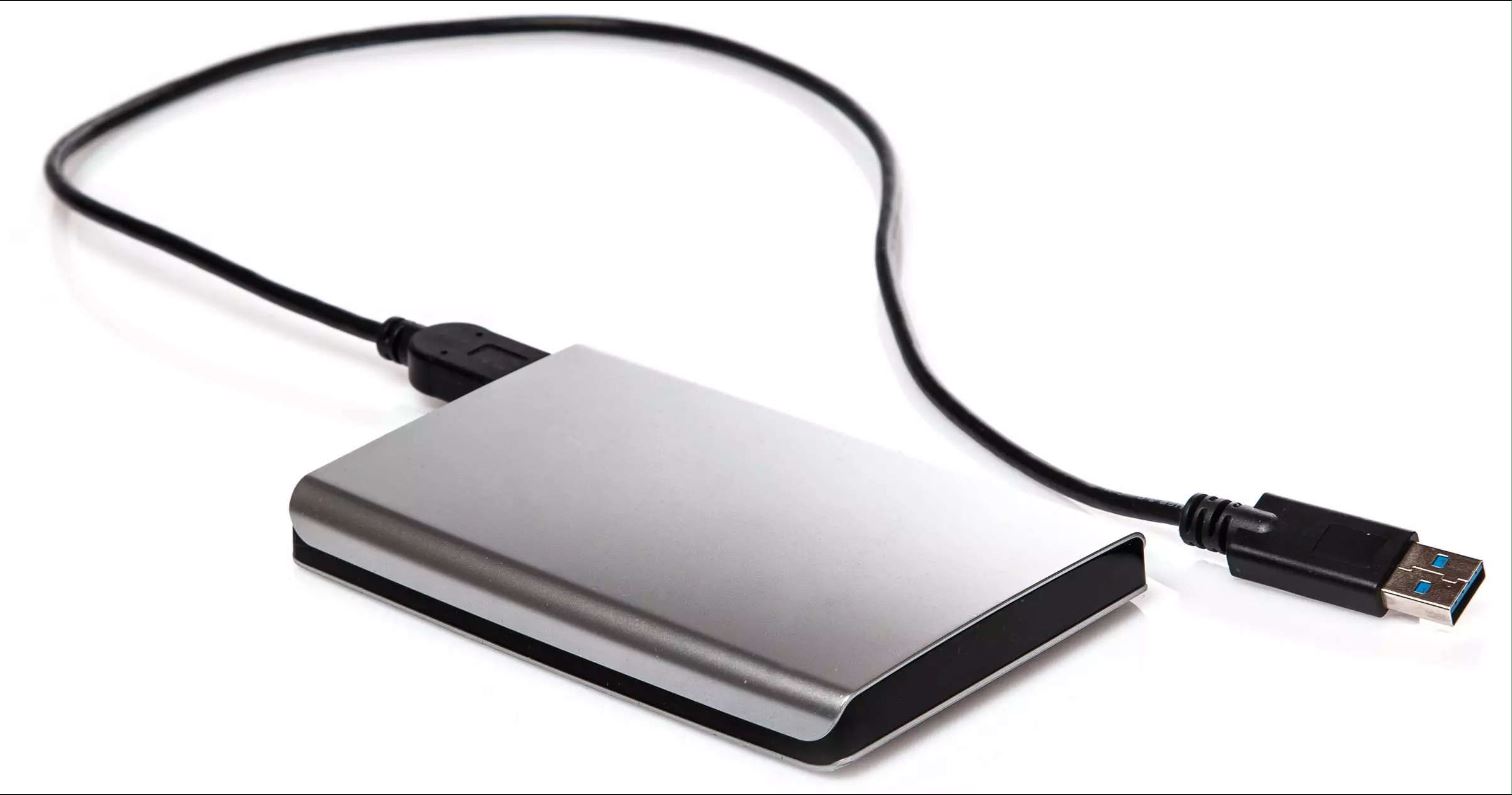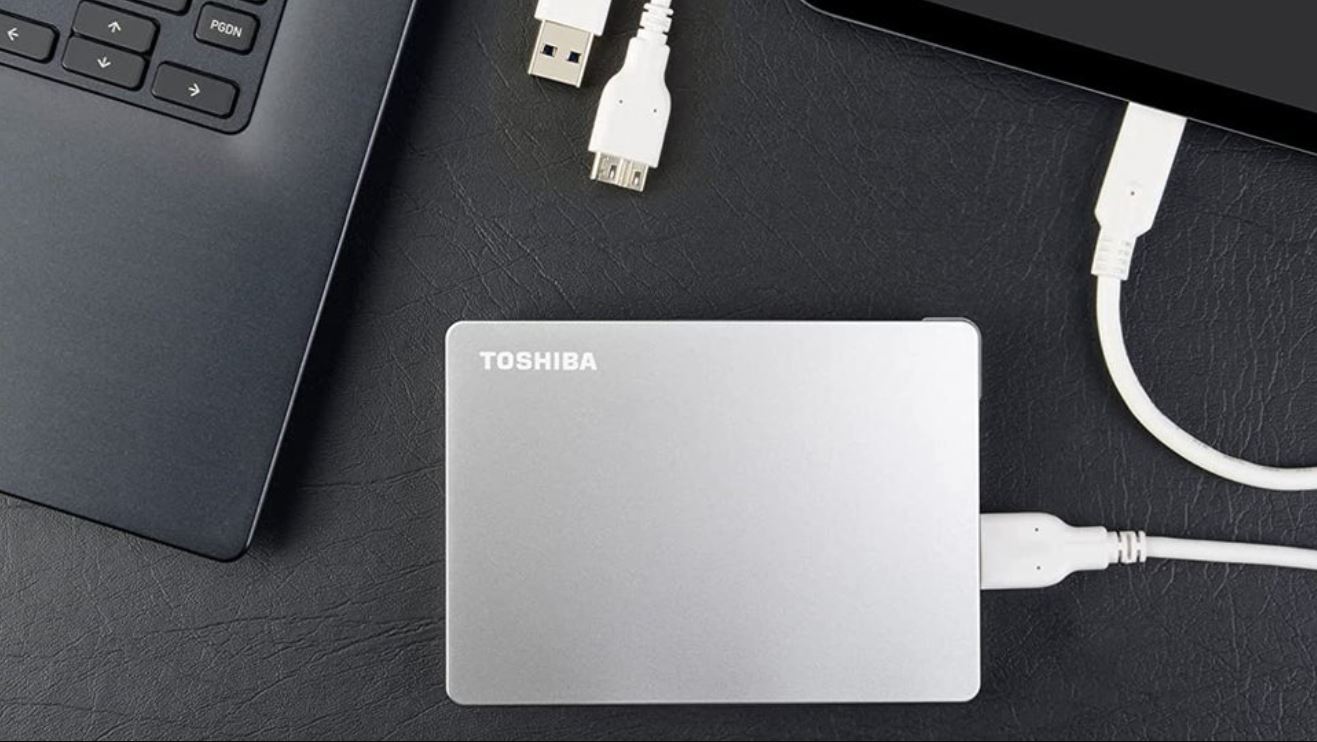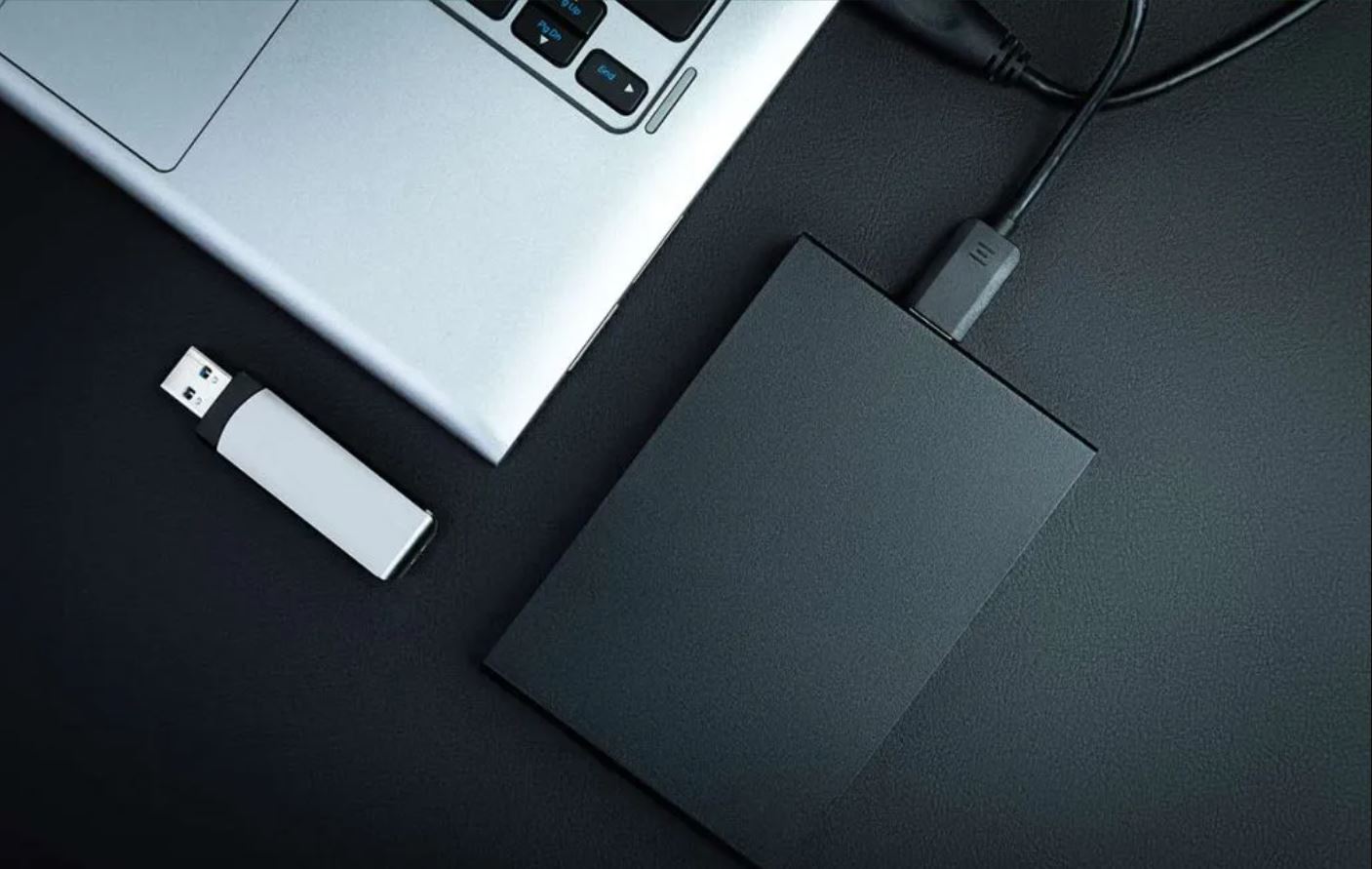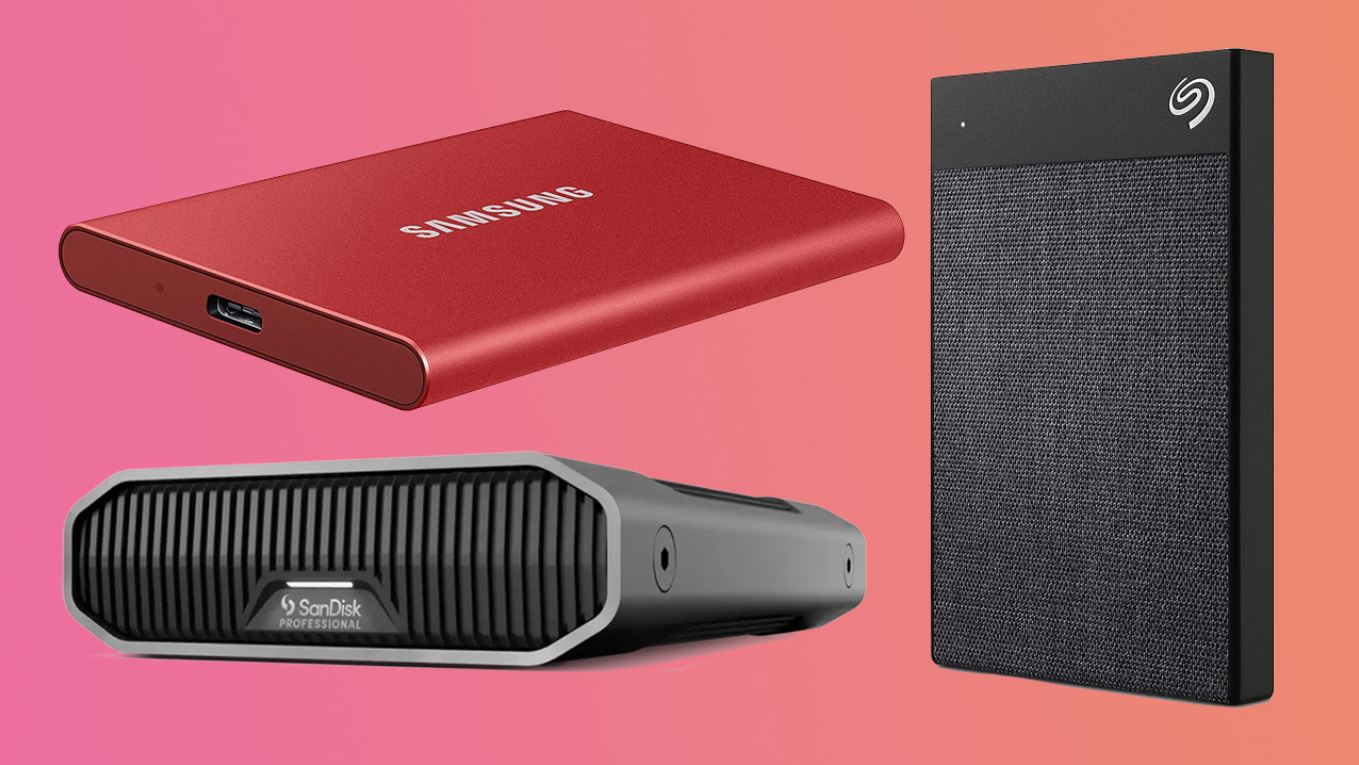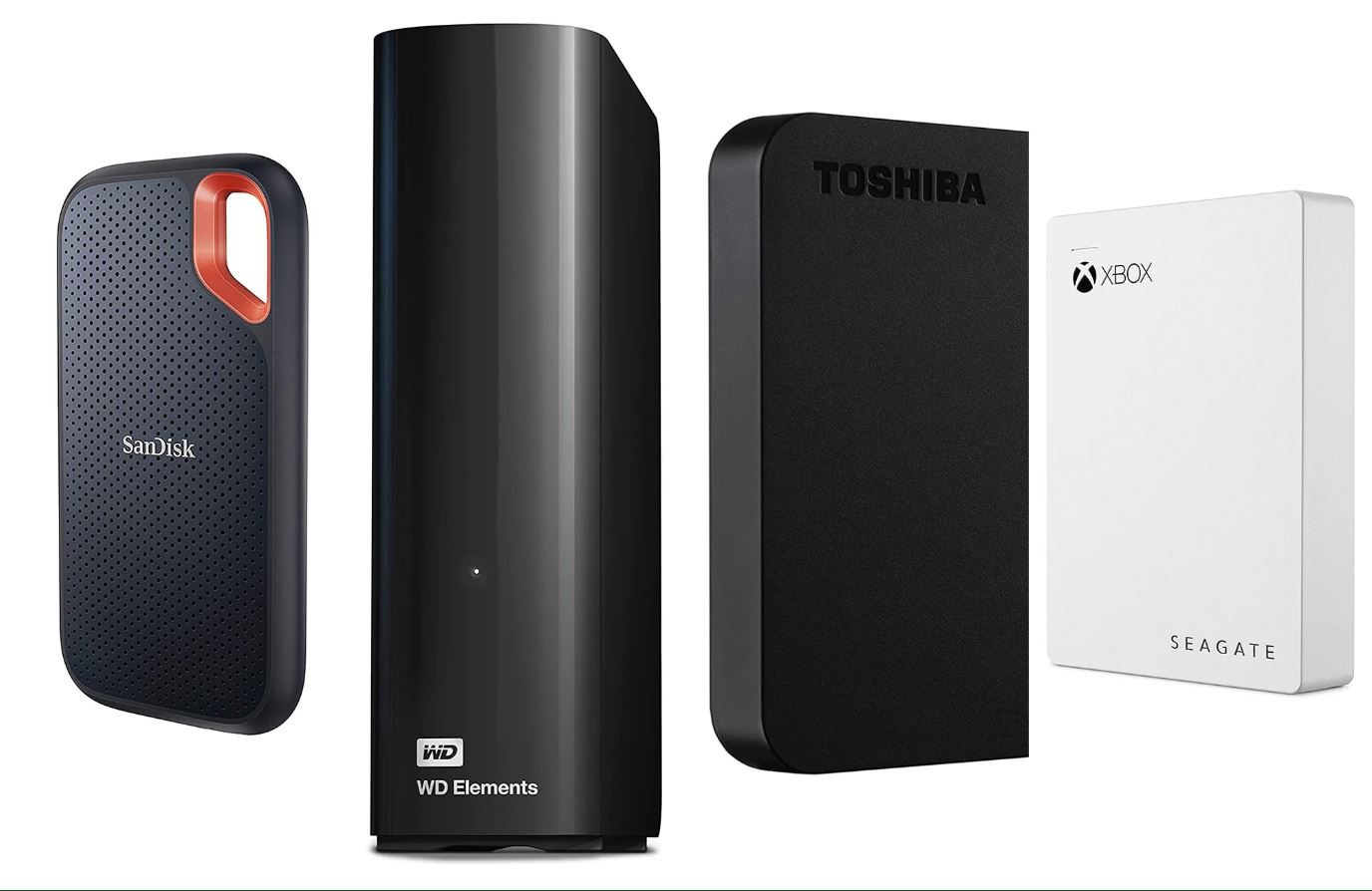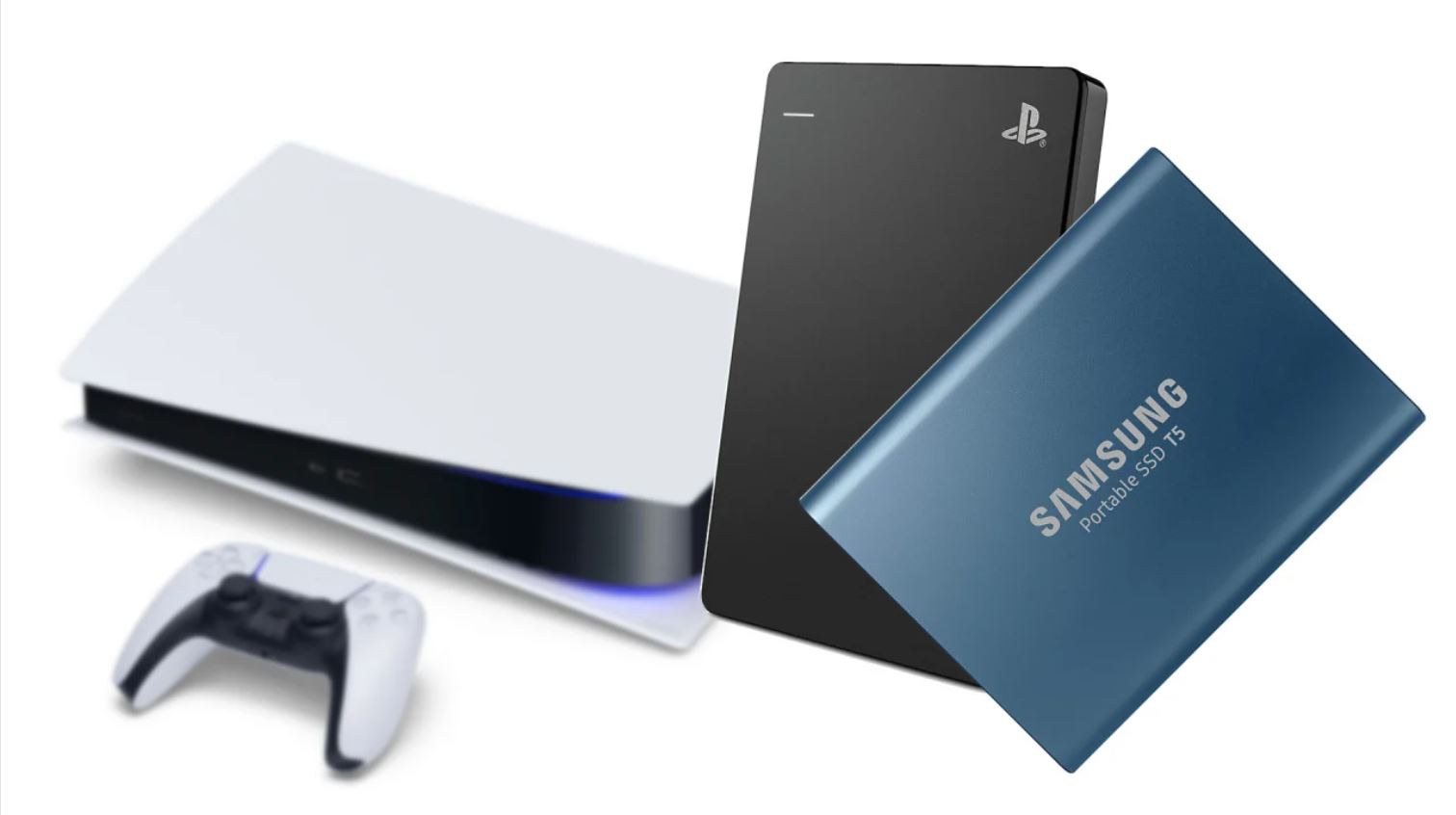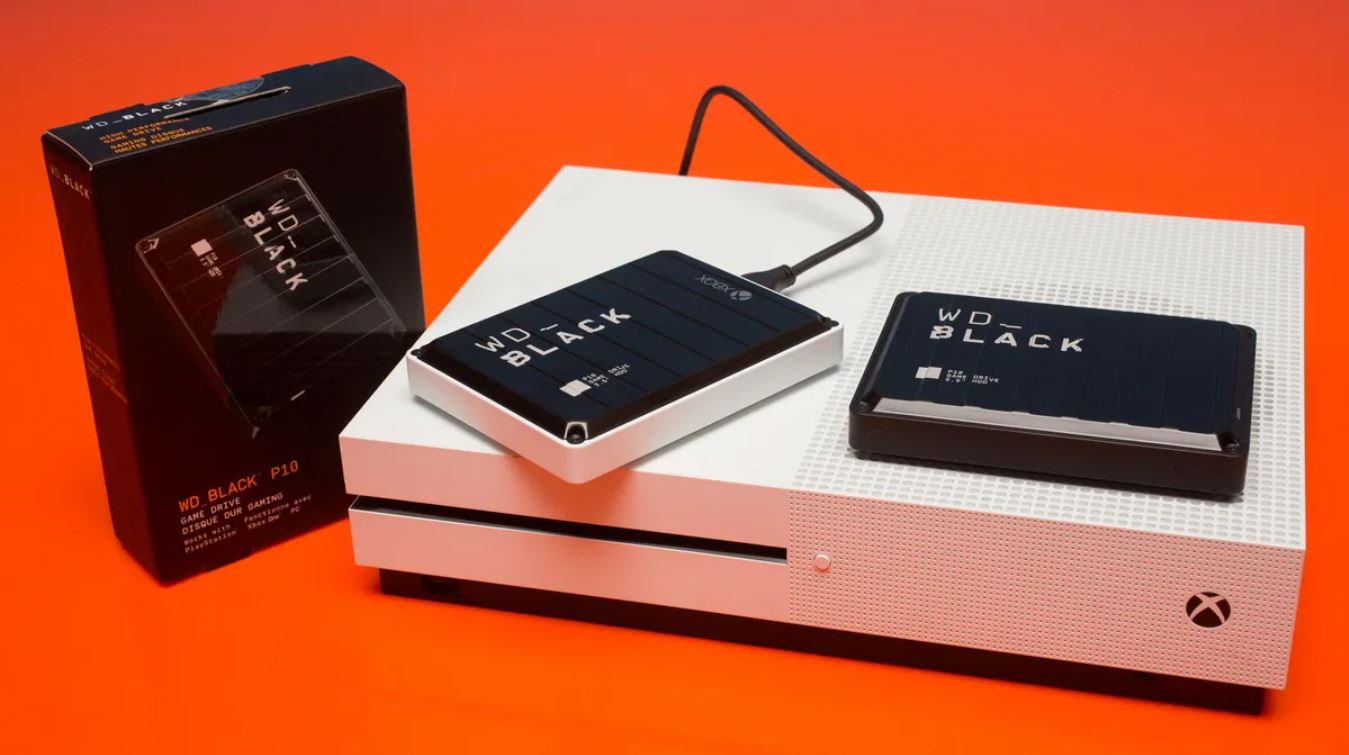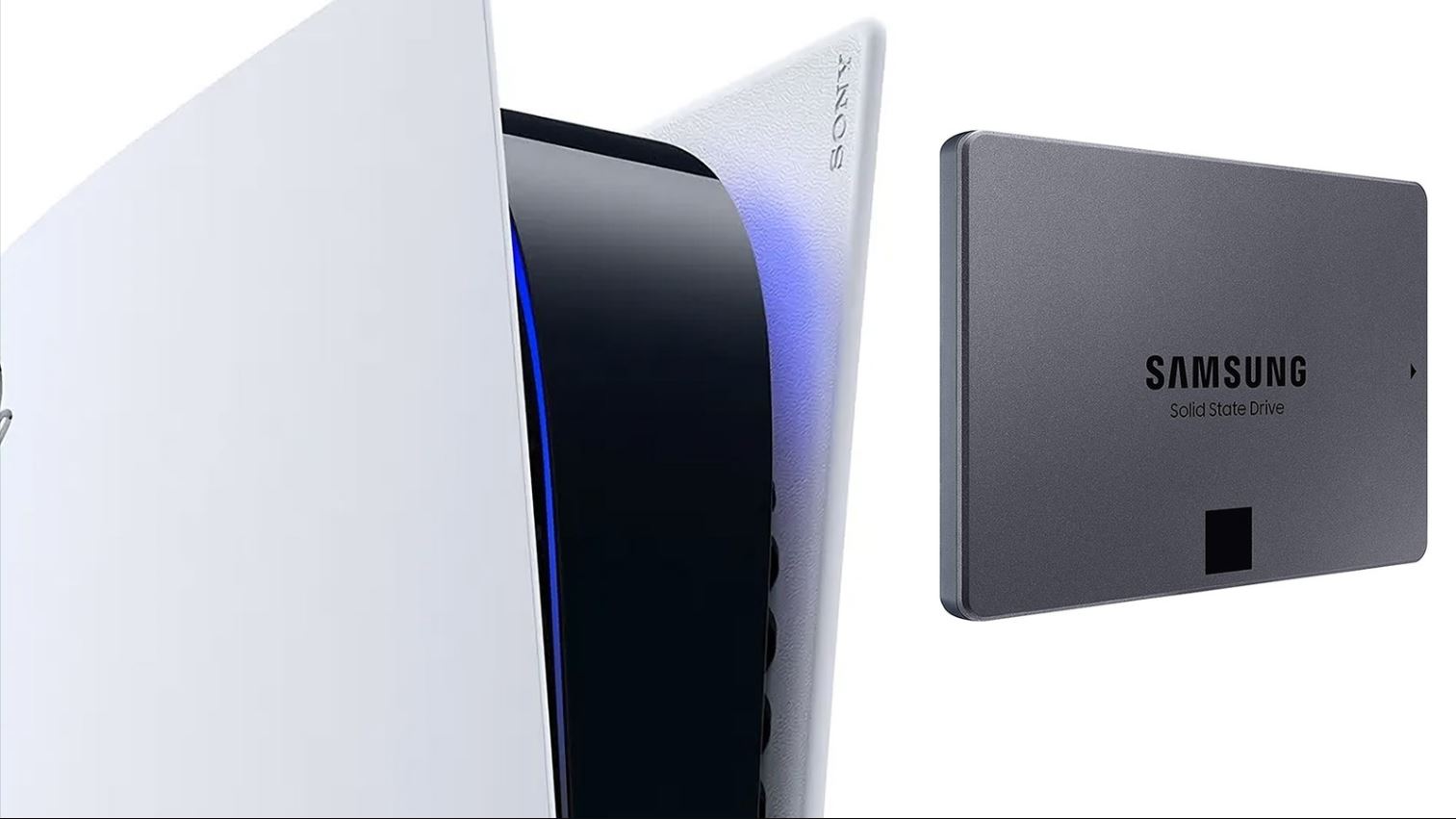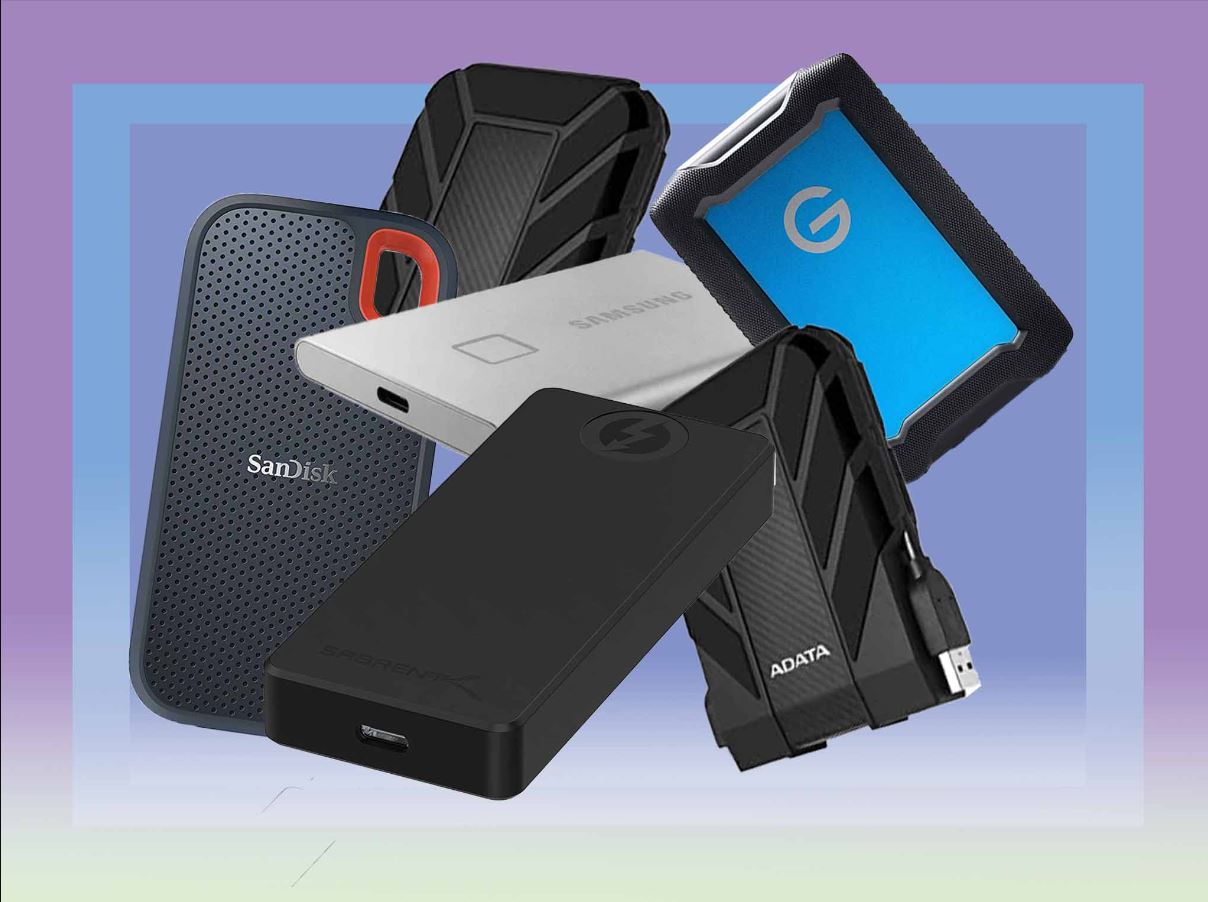Introduction
An external hard drive has become an essential tool for many individuals and businesses in today’s digital age. With the increasing amount of data we generate and store, having a reliable and portable storage solution has become paramount. An external hard drive offers the convenience of additional storage space that can be easily connected to computers and other devices.
In this article, we will explore the world of external hard drives, understanding what they are, how they work, and the various types available in the market. We will also discuss the benefits of using an external hard drive, factors to consider when buying one, and tips for using and maintaining it properly. Lastly, we will address the ongoing debate between external hard drives and cloud storage, helping you decide which option suits your needs best.
Whether you are a professional photographer, a student with a collection of academic materials, or a small business owner with important files and documents, an external hard drive can serve as your reliable storage companion. It offers peace of mind by providing an extra layer of backup storage and the flexibility to carry your data wherever you go.
In the following sections, we will delve deeper into the functionality and features of external hard drives, guiding you through everything you need to know to make an informed decision about incorporating one into your digital storage setup.
What is an External Hard Drive?
An external hard drive is a portable storage device that is connected to a computer or other devices via a USB, Thunderbolt, or eSATA connection. It provides a way to expand the storage capacity of your device by offering additional space for storing files, documents, photos, videos, and other digital content.
Unlike the internal hard drive found within a computer or laptop, an external hard drive is separate and can be easily connected or disconnected as needed. It is typically housed in a durable enclosure to protect it from external factors such as dust, moisture, and physical damage, ensuring the safety and longevity of your data.
External hard drives come in varying storage capacities, ranging from a few hundred gigabytes to multiple terabytes. This wide range allows users to choose the storage capacity that meets their specific needs, whether it’s for personal use or professional requirements.
One of the advantages of an external hard drive is the ability to transfer and carry large amounts of data between multiple devices. Whether you need to transfer files from your computer to a colleague’s laptop or backup important data from your smartphone, an external hard drive can facilitate these tasks with ease.
Moreover, an external hard drive provides a convenient solution for creating backups of your important files and data. By regularly backing up your data to an external hard drive, you can protect yourself from data loss caused by hardware malfunctions, accidental deletions, or even cyber threats such as ransomware.
Overall, an external hard drive offers flexibility, mobility, and additional storage for your digital needs. It serves as a reliable companion for storing and transferring data, providing peace of mind knowing that your files are secure, easily accessible, and not limited by the storage capacity of your computer or other devices.
Benefits of an External Hard Drive
An external hard drive offers a multitude of benefits for individuals and businesses alike. Let’s explore some of the key advantages of using an external hard drive:
1. Additional Storage Space: One of the most obvious benefits of an external hard drive is the ability to expand your storage capacity. Whether you have a small laptop with limited internal storage or you need extra space for your growing collection of media files, an external hard drive provides ample room to store your documents, photos, videos, and more.
2. Portability: External hard drives are designed to be portable, making it easy to carry your important data with you wherever you go. Whether you’re traveling, working from different locations, or simply need to transfer files between devices, the compact and lightweight nature of external hard drives allows for easy transportation.
3. Data Backup and Recovery: Accidental file deletions, hardware failure, and software glitches can result in data loss. Having an external hard drive enables you to create regular backups of your important files, providing a safeguard against such unfortunate events. In the event of data loss, you can easily retrieve your backed-up data from the external hard drive, ensuring minimal disruption to your work or personal life.
4. Improved Performance: As your computer’s internal storage fills up, it can slow down the system’s performance. By offloading files and data onto an external hard drive, you can free up space on your computer, allowing it to operate more efficiently. This can lead to faster boot times, improved application responsiveness, and an overall smoother user experience.
5. Versatility and Compatibility: External hard drives are designed to be compatible with a wide range of devices, including computers, laptops, gaming consoles, and smart TVs. They typically work seamlessly across different operating systems, such as Windows, macOS, and Linux. This makes it easy to transfer and access your files across multiple devices without compatibility issues.
6. Security: External hard drives offer an extra layer of security for your data. Unlike cloud storage, which may be vulnerable to hacking or data breaches, an external hard drive keeps your files offline and under your control. You can password-protect your external hard drive, encrypt sensitive data, and have peace of mind knowing that your information is not accessible to unauthorized individuals.
In summary, the benefits of using an external hard drive include increased storage capacity, portability, data backup and recovery, improved performance, compatibility with various devices, and enhanced data security. These advantages make external hard drives an invaluable tool for individuals and businesses seeking to expand their storage capabilities and protect their valuable data.
How Does an External Hard Drive Work?
An external hard drive operates on the same basic principles as an internal hard drive found within a computer or laptop. It consists of a spinning magnetic disk (or multiple disks) and a read/write head that moves across the surface of the disk to retrieve or store data.
When you connect an external hard drive to your computer or other device, the data transfer is facilitated through the USB, Thunderbolt, or eSATA connection. These interfaces allow for high-speed data transfer between the external hard drive and the device it is connected to.
Once connected, the computer recognizes the external hard drive as a separate storage device. The operating system communicates with the hard drive through specific protocols, such as SATA (Serial ATA) or USB, allowing the user to access the files and data stored on the drive.
When you save a file to an external hard drive or retrieve data from it, the read/write head of the hard drive is used. It moves quickly across the surface of the spinning disk, magnetically reading or writing data to specific sectors on the disk. The read/write head hovers just above the disk and does not actually touch the surface, which helps prevent damage to the disk.
The data on the external hard drive is organized into sectors, tracks, and cylinders. These divisions allow the read/write head to locate and access the specific areas on the disk to retrieve or store the data. The file system used on the hard drive, such as FAT32 or NTFS, further manages the organization and storage of the data.
An external hard drive also contains internal circuitry and electronics that control its operation. This includes the controller chip, which manages the communication between the hard drive and the device it is connected to, as well as other components that regulate power, handle data encryption, or provide additional features like password protection.
In summary, an external hard drive works by connecting to a device via a specific interface, such as USB or Thunderbolt. It uses a spinning magnetic disk and a read/write head to store and retrieve data. The file system and internal circuitry play crucial roles in managing and regulating the storage and operation of the external hard drive.
Types of External Hard Drives
External hard drives come in various types, catering to different storage needs and preferences. Let’s explore the most common types:
1. Portable External Hard Drives: Portable external hard drives are compact and lightweight, making them ideal for users who require a storage solution on the go. These drives are powered by the device they are connected to, eliminating the need for an external power source. They typically offer high storage capacities and are suitable for transferring files between devices or carrying large amounts of data while traveling.
2. Desktop External Hard Drives: Desktop external hard drives are typically larger in size and offer higher storage capacities compared to portable drives. They usually require an external power source and are designed to stay connected to a desktop computer or a stationary device. Desktop drives are suitable for users who need a large amount of storage space for backups, media libraries, or professional applications.
3. Solid-State Drives (SSDs): Solid-state drives use flash memory instead of spinning magnetic disks. They offer faster data transfer speeds, improved durability, and reduced power consumption compared to traditional hard drives. While SSDs are generally more expensive per gigabyte of storage, they provide significant performance benefits, making them a popular choice for professionals in need of fast and reliable storage solutions.
4. Network Attached Storage (NAS) Drives: NAS drives are external hard drives that are designed to be connected to a network, allowing multiple devices to access the stored data simultaneously. They are commonly used in home or office environments where multiple users need to collaborate or access files from different devices. NAS drives offer advanced features like data redundancy, remote access, and media streaming capabilities.
5. Wireless External Hard Drives: Wireless external hard drives connect to devices wirelessly, usually through Wi-Fi or Bluetooth. These drives provide a convenient way to access your files without the need for physical connections. They are useful for users who want to stream media, share files with multiple devices, or create a personal cloud storage solution.
6. Rugged External Hard Drives: Rugged external hard drives are designed to withstand harsh environments, making them suitable for users who need extra protection for their data. These drives are built with shockproof and waterproof features, as well as robust enclosures to withstand extreme temperatures, dust, and vibration. Rugged drives are commonly used by outdoor photographers, videographers, or individuals working in challenging conditions.
It’s important to consider your specific needs, such as storage capacity, portability, and features, when choosing the type of external hard drive that best suits you. Each type offers unique advantages, so carefully evaluate your requirements to make an informed decision.
Factors to Consider When Buying an External Hard Drive
When choosing an external hard drive, it’s essential to consider certain factors to ensure that you select the right device for your needs. Here are some key factors to consider:
1. Storage Capacity: Determine your storage requirements by evaluating the amount of data you need to store. Consider both your current needs and potential future growth. Opt for an external hard drive with sufficient capacity to accommodate your files, ensuring you won’t run out of space in the near future.
2. Speed and Performance: Look for external hard drives with fast data transfer speeds to ensure efficient file transfers, especially when dealing with large files. Solid-state drives (SSDs) generally offer faster speeds compared to traditional hard drives, but they are usually more expensive.
3. Compatibility: Ensure that the external hard drive is compatible with your devices and operating systems. Check if it works seamlessly with your computer, laptop, or other devices, including gaming consoles and smart TVs. Consider the interface options (e.g., USB, Thunderbolt) available on your devices and select an external hard drive with matching interfaces.
4. Portability: If you need to carry your external hard drive with you frequently, choose a portable and lightweight option that easily fits in your bag or pocket. Portable external hard drives are typically bus-powered, meaning they draw power from the device they are connected to, avoiding the need for an external power source.
5. Reliability and Durability: Look for an external hard drive that is built to last. Consider factors such as the build quality, shock resistance, and protection against dust and water. Certain models even offer rugged features that are designed to withstand extreme conditions, making them suitable for outdoor or harsh environments.
6. Backup and Security Features: Check if the external hard drive comes with backup software that allows you to create automated backups of your files. Some drives also offer built-in encryption features to protect your data from unauthorized access. These additional features can provide peace of mind and added security for your important files.
7. Price and Warranty: Set a budget for your external hard drive purchase and compare prices across different brands and models. Keep in mind that prices may vary based on storage capacity, speed, and additional features. Additionally, check the warranty offered by the manufacturer to ensure support and assistance should you encounter any problems with the drive.
8. Customer Reviews: Before making a final decision, read customer reviews and feedback on the specific model you are considering. This can provide insights into the reliability, performance, and user experience of the external hard drive.
By considering these factors, you can make an informed decision when purchasing an external hard drive that meets your storage needs and suits your specific requirements. Investing time in researching and evaluating these factors will ensure that you find a reliable and durable external hard drive that complements your digital lifestyle.
How to Use an External Hard Drive
Using an external hard drive is straightforward, and it can provide a convenient way to store, backup, and transfer your files. Here are the basic steps to follow when using an external hard drive:
Step 1: Connect the External Hard Drive: Use the appropriate cable (USB, Thunderbolt, eSATA) to connect the external hard drive to your computer or device. Ensure that the cable is securely connected to both the external hard drive and the device.
Step 2: Power On the External Hard Drive (if applicable): If you are using a desktop external hard drive that requires an external power source, make sure to connect the power adapter to an electrical outlet and turn on the drive.
Step 3: Wait for the Device to Recognize the External Hard Drive: Once connected, your computer or device should detect the external hard drive and display it as a new storage device. The operating system may prompt you to install any necessary drivers or software for the drive.
Step 4: Format the External Hard Drive (if needed): In some cases, the external hard drive may need to be formatted before it can be used, especially if it is brand new or if it was previously used with a different file system. Formatting erases all data on the drive, so ensure that you have a backup of any important files before proceeding with formatting.
Step 5: Transfer or Save Files to the External Hard Drive: To transfer files to the external hard drive, simply drag and drop the files or use the copy-paste method. Alternatively, you can use backup software provided with the drive or third-party backup tools to automate the backup process. Ensure that you organize your files into folders for better organization and easy retrieval.
Step 6: Safely Disconnect the External Hard Drive: Before disconnecting the external hard drive from your device, it is essential to safely eject or disconnect it. This prevents data loss or potential corruption of files. On your computer, locate the external hard drive icon in the system tray or on the desktop, right-click on it, and choose the option to eject or safely remove the drive. Wait until you receive confirmation that it is safe to disconnect, then unplug the cable from the device.
Step 7: Store the External Hard Drive Properly: When not in use, it is important to store the external hard drive in a safe and dry place, away from extreme temperatures and exposure to dust or moisture. Consider using a protective case or sleeve to further safeguard the drive from physical damage.
Repeat these steps whenever you need to access, backup, or transfer files to or from the external hard drive. By following these simple guidelines, you can effectively use an external hard drive to manage your digital files and ensure that your data remains secure and accessible whenever you need it.
Tips for Maintaining and Safeguarding Your External Hard Drive
Maintaining and safeguarding your external hard drive is crucial to ensure the longevity and safety of your data. By following these tips, you can minimize the risk of data loss and protect your valuable files:
1. Keep Your External Hard Drive in a Safe Environment: Protect your external hard drive from physical damage by keeping it in a clean and dry environment. Avoid exposing it to extreme temperatures, moisture, or direct sunlight. Additionally, keep it away from magnetic fields and sources of electrical interference.
2. Handle With Care: Handle your external hard drive with care, avoiding rough handling or dropping it. Even rugged external hard drives can be damaged if subjected to severe impacts or shock. Treat it as a delicate piece of hardware to maintain its integrity.
3. Regularly Backup Your Data: Make it a habit to back up your important files on a regular basis. Create redundant copies of your data on different storage devices, such as cloud storage or a second external hard drive. This provides an extra layer of protection in case of hardware failure or accidental deletion.
4. Protect Against Malware: Scan your external hard drive regularly with reliable antivirus software to detect and remove any potential malware or viruses. This helps safeguard your data and prevents the spread of malicious software to other devices.
5. Safely Eject the External Hard Drive: Always use the proper procedure to safely eject or disconnect the external hard drive from your device. This ensures that all data has been written and prevents file corruption. Avoid unplugging the drive abruptly, as it may lead to data loss or damage to the drive.
6. Keep Software and Firmware Updated: Check for any software updates for your external hard drive, such as drivers or firmware updates. These updates often include bug fixes, security patches, and performance improvements. Regularly updating your drive’s software helps maintain compatibility and ensures optimal performance.
7. Use a Power Surge Protector: Connect your external hard drive to a power surge protector or an uninterruptible power supply (UPS) to protect it from power surges and voltage fluctuations. Power surges can damage the electronics of the drive, leading to data loss or drive failure.
8. Encrypt Sensitive Data: If you store sensitive or confidential data on your external hard drive, consider encrypting it. Encryption ensures that your data is protected and can only be accessed by authorized users with the decryption key. This adds an extra layer of security in case your drive falls into the wrong hands.
9. Regularly Check for Errors: Periodically scan your external hard drive for errors or bad sectors using the built-in error-checking tools provided by your operating system. This helps identify and correct any potential disk errors, ensuring optimal performance and preventing data loss.
10. Avoid Overloading the Drive: While external hard drives are designed to handle large amounts of data, avoid filling the drive to its maximum capacity. Leave some free space to maintain optimal performance and prevent data fragmentation. This also allows for easier management of your files.
By implementing these tips, you can effectively maintain and safeguard your external hard drive, protecting your valuable data and ensuring its availability whenever you need it.
External Hard Drive vs Cloud Storage: Which is Better?
When it comes to storing and backing up your data, you have two primary options: external hard drives and cloud storage. Both offer unique advantages and cater to different needs. Let’s compare the two to determine which option is better for you:
External Hard Drives:
Pros:
- High storage capacity: External hard drives can offer terabytes of storage space, allowing you to store a vast amount of data.
- Control and privacy: With an external hard drive, you have complete control over your data. Your files are stored offline, reducing the risk of unauthorized access.
- One-time cost: While external hard drives have an upfront cost, you don’t have to worry about monthly or annual subscription fees.
- No reliance on internet connection: External hard drives do not require an internet connection to access your data, making them reliable and accessible even in areas with poor or no internet connectivity.
Cons:
- Risk of physical damage or loss: External hard drives can be damaged or lost, leading to potential data loss. It is crucial to handle and store them carefully.
- Limited mobility: While portable external hard drives offer some mobility, they are still tied to physical storage devices. Carrying them everywhere may not be as convenient as accessing your files from any device with an internet connection.
- Not automatically synced or updated: External hard drives require manual backups and file synchronization, which can be time-consuming and prone to human error.
Cloud Storage:
Pros:
- Accessibility from anywhere: Cloud storage allows you to access your files from any device with an internet connection, providing convenience and flexibility.
- Scalability: Most cloud storage providers offer scalable plans, allowing you to easily increase your storage capacity as your needs grow.
- Data synchronization and backup: Cloud storage services often provide automatic file synchronization and backups, ensuring that your data remains up-to-date and protected.
- Redundancy and data recovery: Cloud storage providers typically have multiple servers in different locations, ensuring data redundancy and offering recovery options in case of hardware failures or disasters.
Cons:
- Costs over time: Cloud storage services usually have monthly or annual subscription fees, which can add up over time.
- Dependence on internet connection: Accessing your files from the cloud requires an internet connection. Without internet access, you may not be able to retrieve or upload files.
- Privacy concerns: Storing your data on the cloud means relying on the security measures of the service provider. There have been instances of data breaches, and your data may be accessed or compromised by third parties.
Ultimately, the better option between an external hard drive and cloud storage depends on your specific needs and preferences. If you prioritize physical control, high storage capacity, and one-time costs, an external hard drive may be the right choice. On the other hand, if you value accessibility, automatic backups, and scalability, cloud storage might be a better fit.
Consider your storage requirements, budget, mobility needs, and the level of convenience and security you desire when making your decision. Some users may even find a combination of both options to be the most suitable, leveraging the advantages of each method to meet their storage needs.
Conclusion
An external hard drive is a versatile and valuable tool for expanding your storage capacity, backing up your data, and transferring files. With various types and factors to consider, it’s essential to choose the right external hard drive that meets your specific needs.
We explored what an external hard drive is and how it works, along with the benefits it offers. We discussed the different types of external hard drives available, such as portable, desktop, SSDs, NAS drives, wireless drives, and rugged drives, each catering to different storage requirements and preferences.
When buying an external hard drive, it’s important to consider factors such as storage capacity, speed, compatibility, portability, reliability, and price. These factors ensure that you select an external hard drive that aligns with your storage needs and budget.
We also discussed how to use an external hard drive effectively, including connecting, transferring files, and safely ejecting the drive. Additionally, we provided tips for maintaining and safeguarding your external hard drive, emphasizing proper care and backup practices to protect your valuable data.
Furthermore, we compared external hard drives with cloud storage, highlighting the advantages and disadvantages of each option. Whether you prioritize control and privacy with an external hard drive or the convenience and scalability of cloud storage, the choice ultimately depends on your specific requirements and preferences.
In conclusion, external hard drives serve as reliable and portable storage solutions, offering expanded storage capacities, data backup options, and flexibility in accessing and transferring files. By selecting the right external hard drive and following best practices for maintenance and data protection, you can ensure the safety and availability of your files for years to come.







